our services
Initial Oral Examination
Dentures / Partials

children’s dentistry
We love kids! We can make your child’s first dental experience a positive one. Pleasant visits to the dentist’s office promote the establishment of trust and confidence in your child that will last a lifetime. Our goal is to establish good dental care habits, help all children feel good about visiting the dentist, and to teach them how to care for their teeth.

dental implants
Dental Implants are basically sophisticated screws made of a medically pure metal, Titanium. These screws are then placed in the jaw bone and rest under the gum for 3 – 6 months. During this time they actually fuse to the jawbone and become osseo (bone) integrated. After the appropriate healing time, we uncover the implants and use them to replace one or more missing teeth by fabricating some sort of dental prosthesis.
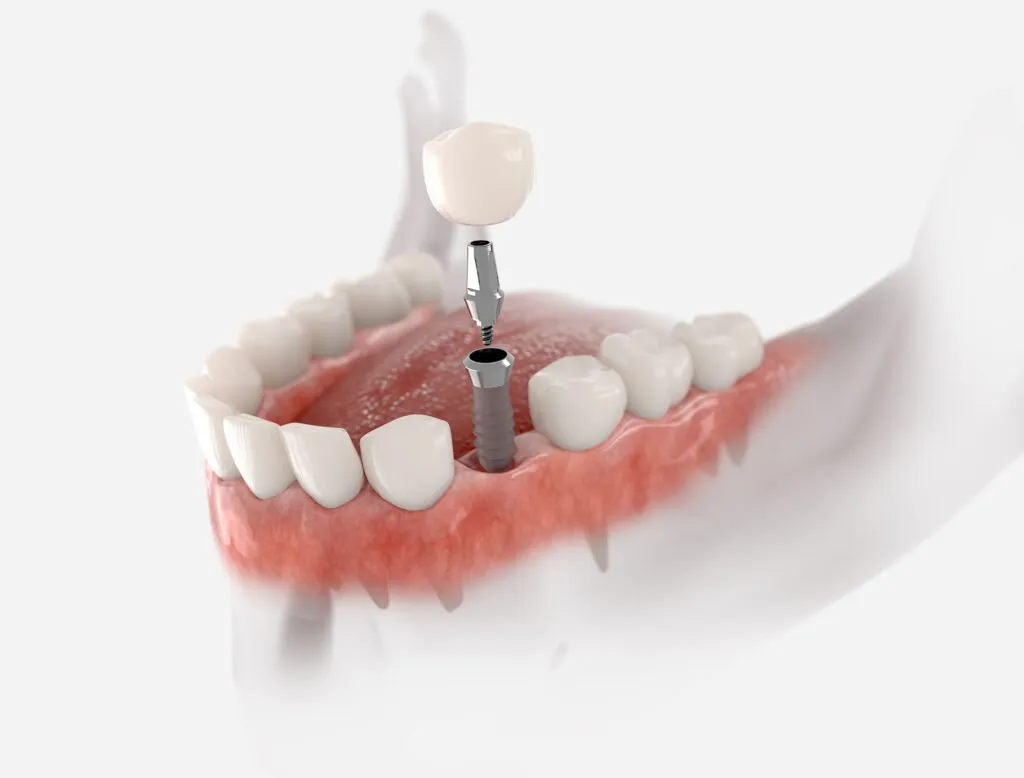
composite fillings
We use composite (tooth-colored) fillings that are light cured to match your teeth. They are a mixture of glass or quartz filler in a resin medium. They are sometimes referred to as composites or filled resins. Composite fillings provide good durability and resistance to fracture in small-to-mid size restorations that need to withstand moderate chewing pressure. Less tooth structure is removed when the dentist prepares the tooth, and this may result in a smaller filling than that of an amalgam.
Composites can also be “bonded” or adhesively held in a cavity, often allowing the dentist to make a more conservative repair to the tooth. Direct dental composites are placed by the dentist in a clinical setting. Polymerization is accomplished typically with a hand held curing light that emits specific wavelengths keyed to the initiator and catalyst packages involved. When using a curing light, the light should be held as close to the resin surface as possible, a shield should be placed between the light tip and the operator’s eyes. Curing time should be increased for darker resin shades. Light cured resins provide denser restorations than self-cured resins because no mixing is required that might introduce air bubble porosity.
Direct dental composites can be used for filling cavity preparations, filling gaps between teeth using a shell-like veneer, minor reshaping of teeth and partial crowns on single teeth.

tooth extractions
In cases in which decay or an abscess (infection) is so severe that a root canal or other treatment cannot save the tooth, your dentist may recommend that the tooth be removed. A tooth extraction should be done as soon as possible to avoid the spread of infection to other areas of your mouth, or other more serious problems. We can extract a single tooth, full mouth, and most wisdom teeth.
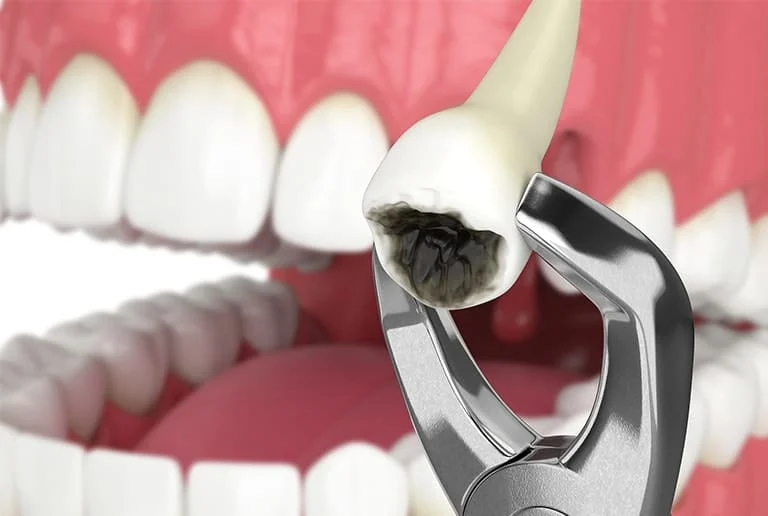
crowns
The reasons your dentist may suggest restoring your tooth with a crown can vary from case to case. Some of the indications for a using a crown are:
A previously filled tooth where there now exists more filling than tooth. The existing tooth structure becomes weakened and can no longer support the filling.
Extensive damage by decay.
Discolorations and compromised esthetics.
Fractures
Root canal – After root canal, teeth tend to become brittle and are more apt to fracture. They, therefore, need to be protected by a crown.
Bridges – When missing teeth are replaced with a bridge, the adjacent teeth require crowns in order to support the replacement teeth.
Crowns strengthen and protect the remaining tooth structure and can improve the appearance of your teeth. Crowns can be made from different materials which include the full porcelain crown, the porcelain fused-to-metal crown and the all-metal crown. You and your dentist will decide which type is appropriate, depending upon the strength requirements and esthetic concerns of the tooth involved.
Fitting a crown requires at least two appointments. During your first visit, the tooth is prepared for the crown, an impression or mold is made of the tooth, and a temporary crown is placed over the prepared tooth. At the subsequent visit, the temporary crown is removed and the final crown is fitted and adjusted and cemented into place.
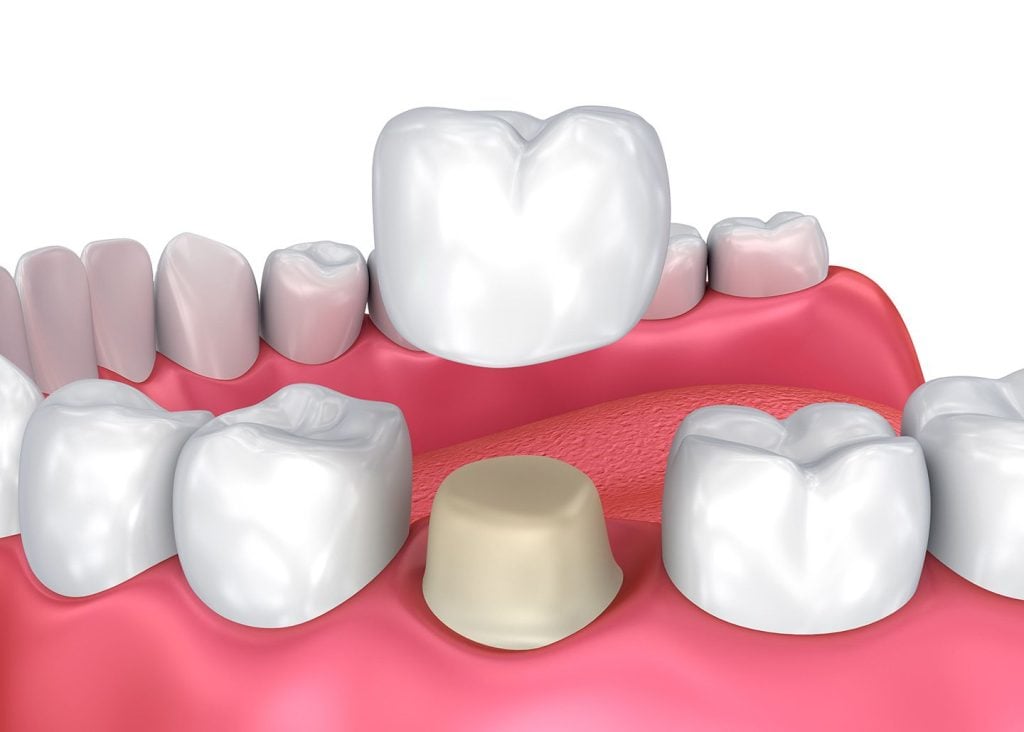
bridges
The loss of a single tooth can have a major impact on your dental health and personal appearance. Your teeth support and rely on each other. When one or more teeth are missing, the remaining teeth can shift out of their normal position. Teeth adjacent to the space or from the opposite jaw will often drift or tilt. These teeth are often more susceptible to decay and gum disease because they are more difficult to clean around. All of this shifting and drifting will lead to changes in the bite, which may put stress on the jaws, muscles and teeth. Ultimately, your ability to chew comfortably and your appearance may be affected.
If tooth loss occurs, your dentist may recommend that a bridge be placed. A bridge consists of a replacement tooth/teeth attached to crowns on each side. The bridge is cemented to the teeth adjacent to the space, effectively replacing the missing tooth and preventing any shifting.
The procedures involved in making a bridge are very similar to those for making a crown. Bridges can be made from the same materials as crowns – full porcelain, porcelain fused-to-metal, and all metal. At least two appointments are necessary. At the first visit, your dentist will prepare the teeth next to the missing tooth for crowns. An impression of the prepared teeth will be made and a temporary bridge will be placed. At the subsequent visit, we will fit and adjust the bridge and then cement it in place.

veneers
Porcelain veneers are dental prosthetics that are placed on the surface of discolored, chipped, cracked, or misaligned teeth and are probably the most esthetic means of creating a more pleasing smile. They require a minimal amount of tooth reduction (approximately .5 mm) and are, therefore, a more conservative restoration than a crown. Though veneers are simple to place and delicate in appearance, the role a thin ceramic shell can have in producing a beautiful smile is quite remarkable. Dental veneers allow us to alter tooth position, shape, size and color. They are not the only alternative for all esthetic abnormalities but are truly a remarkable restoration when they are the treatment of choice.
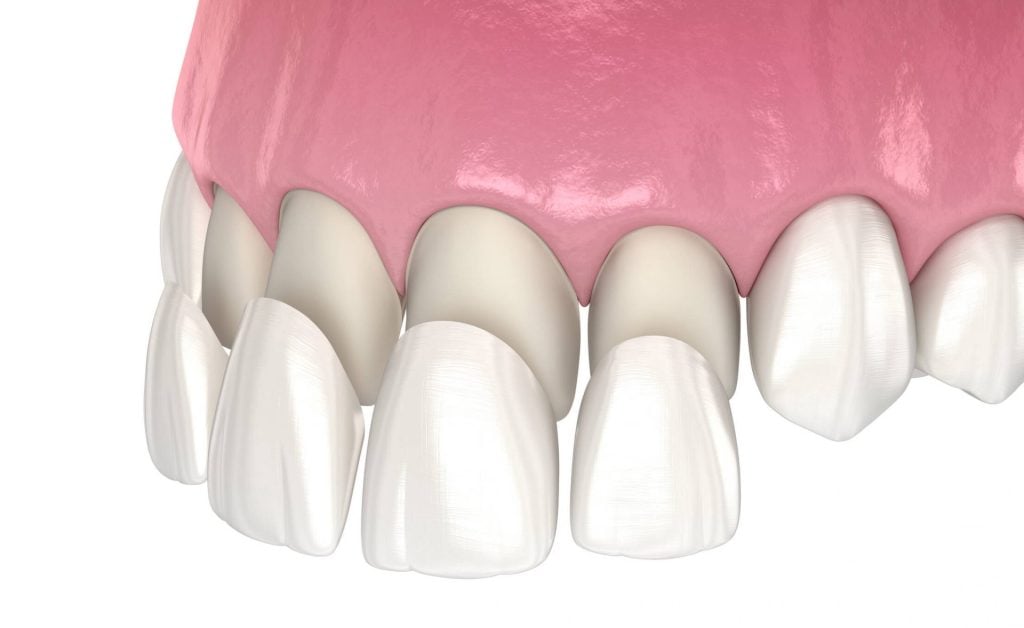
root canals
Endodontic treatment (root canal) treats the inside of the tooth. Endodontic treatment is necessary when the pulp becomes inflamed or infected. The inflammation or infection can have a variety of causes: deep decay, repeated dental procedures on the tooth, faulty crowns, or a crack or chip in the tooth. In addition, trauma to a tooth may cause pulp damage even if the tooth has no visible chips or cracks. If pulp inflammation or infection is left untreated, it can cause pain or lead to an abscess.
The modern root canal treatment is very similar to having a routine filling and usually can be completed in one or two appointments, depending on the condition of your tooth and your personal circumstances. You can expect a comfortable experience during and after your appointment. Saving the natural tooth with root canal treatment has many advantages:
Efficient chewing
Normal biting force and sensation
Natural appearance
Protects other teeth from excessive wear or strain
A root canal treatment helps you maintain your natural smile, continue eating the foods you love and limits the need for ongoing dental work. With proper care, most teeth that have had root canal treatment can last as long as other natural teeth and often for a lifetime.
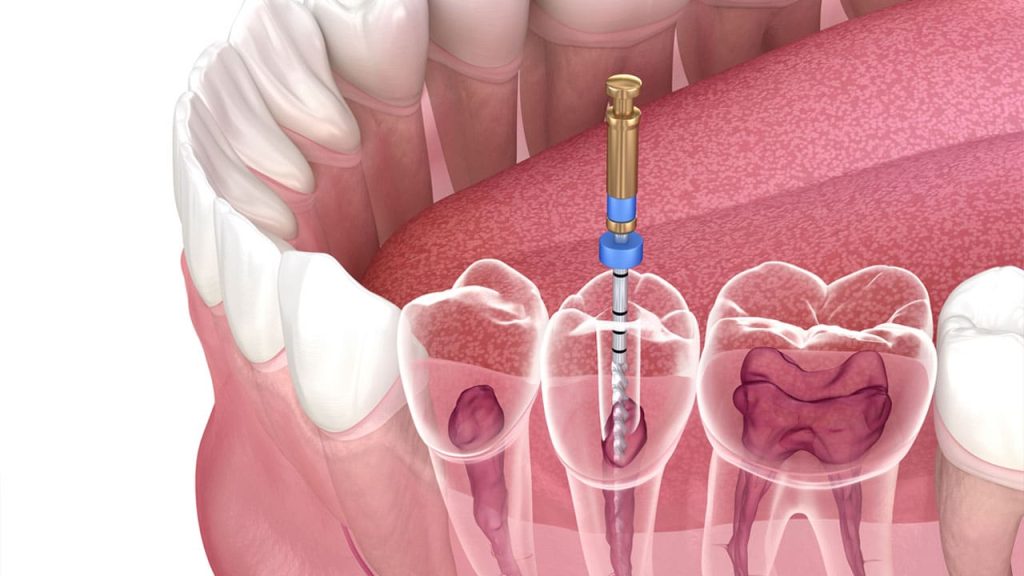
periodontal disease
You should have a standard cleaning at least twice a year If it has been over a year since your last cleaning, possible treatment will include either full mouth debridement or Root Planning and Scaling (requires anesthetic).

teeth whitening
We will provide you a custom whitening tray, made from your own dental impressions. Once at home, you can choose how often and long to use the supplied whitening agent to customize the brightness of your smile.
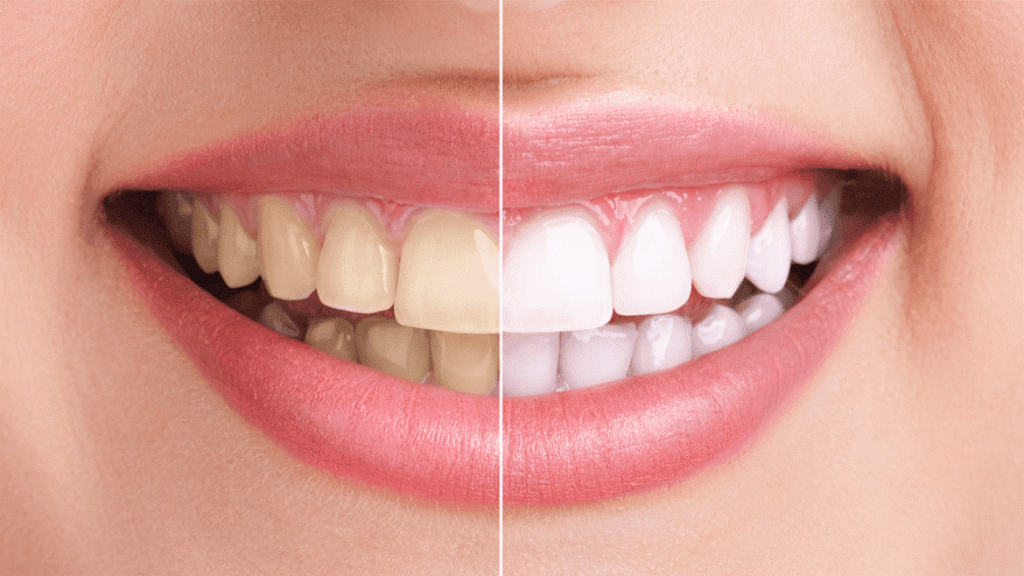
sports dentistry
Whether you are an athlete or casual sports participant, you should wear a mouthguard to protect your teeth. If you grind your teeth while you sleep, a bite guard will help reduce symptoms of TMJ. We custom make mouth guards in both soft and hard materials.
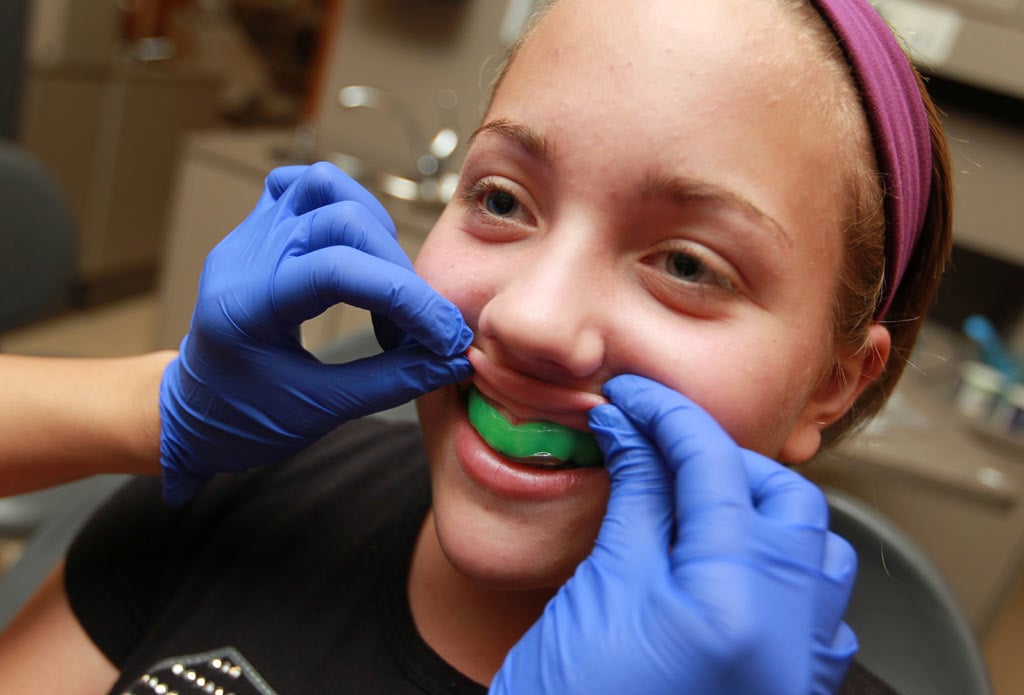
snoring appliances
Snoring Appliances available.

